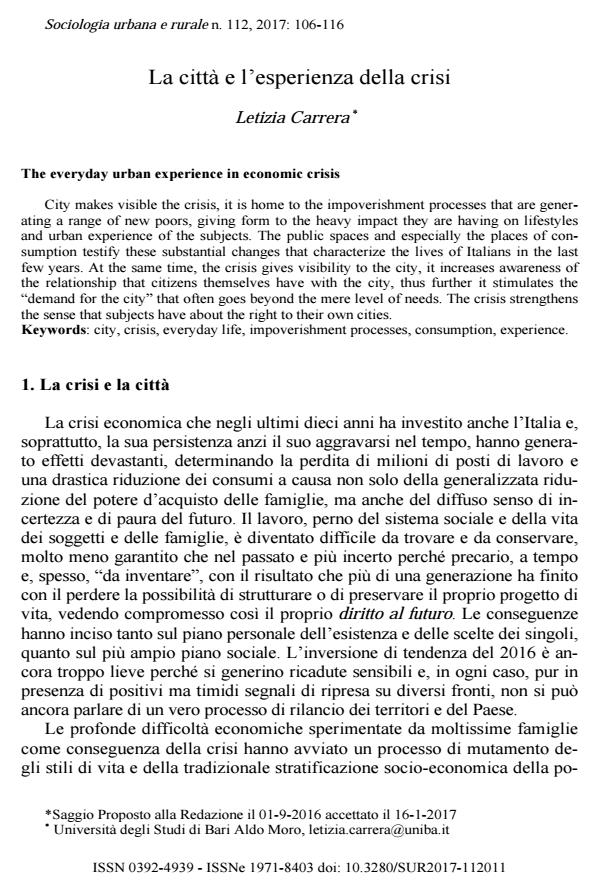The everyday urban experience in economic crisis
Journal title SOCIOLOGIA URBANA E RURALE
Author/s Letizia Carrera
Publishing Year 2017 Issue 2017/112
Language Italian Pages 11 P. 106-116 File size 168 KB
DOI 10.3280/SUR2017-112011
DOI is like a bar code for intellectual property: to have more infomation
click here
Below, you can see the article first page
If you want to buy this article in PDF format, you can do it, following the instructions to buy download credits

FrancoAngeli is member of Publishers International Linking Association, Inc (PILA), a not-for-profit association which run the CrossRef service enabling links to and from online scholarly content.
City makes visible the crisis, it is home to the impoverishment processes that are generating a range of new poors, giving form to the heavy impact they are having on lifestyles and urban experience of the subjects. The public spaces and especially the places of consumption testify these substantial changes that characterize the lives of Italians in the last few years. At the same time, the crisis gives visibility to the city, it increases awareness of the relationship that citizens themselves have with the city, thus further it stimulates the "demand for the city" that often goes beyond the mere level of needs. The crisis strengthens the sense that subjects have about the right to their own cities.
Keywords: City, crisis, everyday life, impoverishment processes, consumption, experience.
Letizia Carrera, La città e l’esperienza della crisi in "SOCIOLOGIA URBANA E RURALE" 112/2017, pp 106-116, DOI: 10.3280/SUR2017-112011